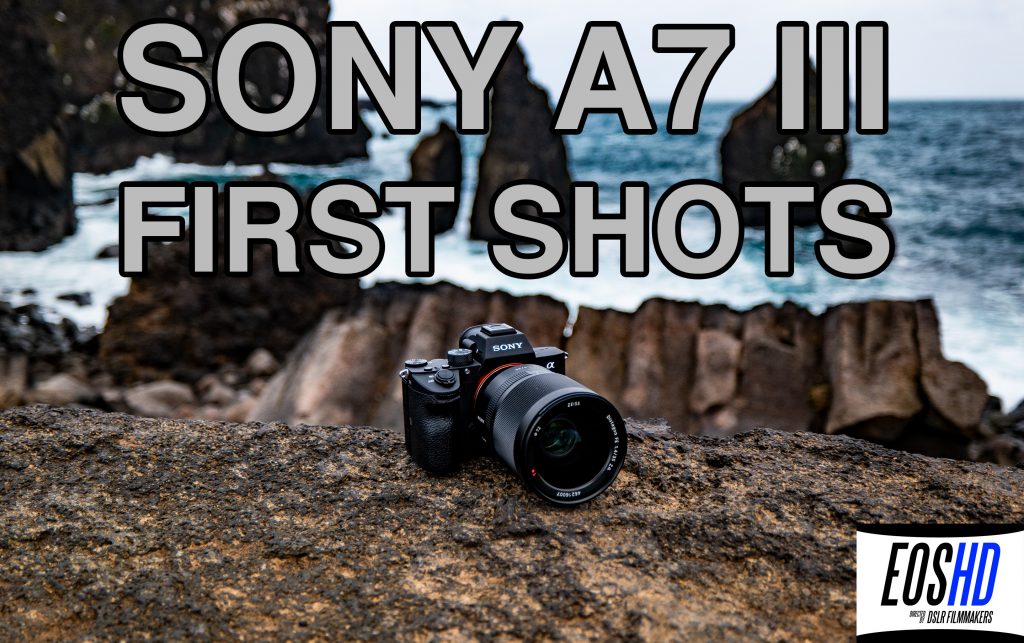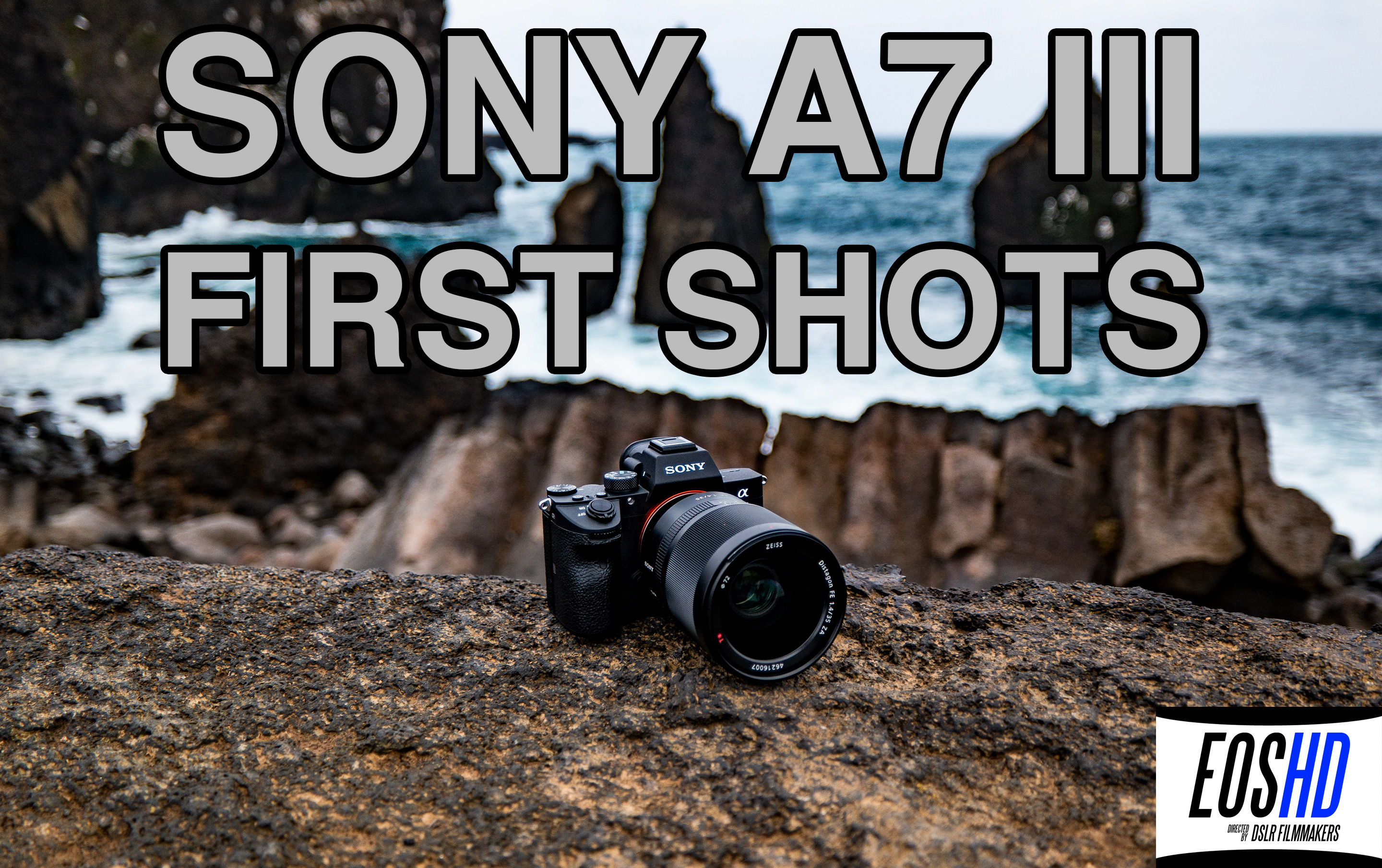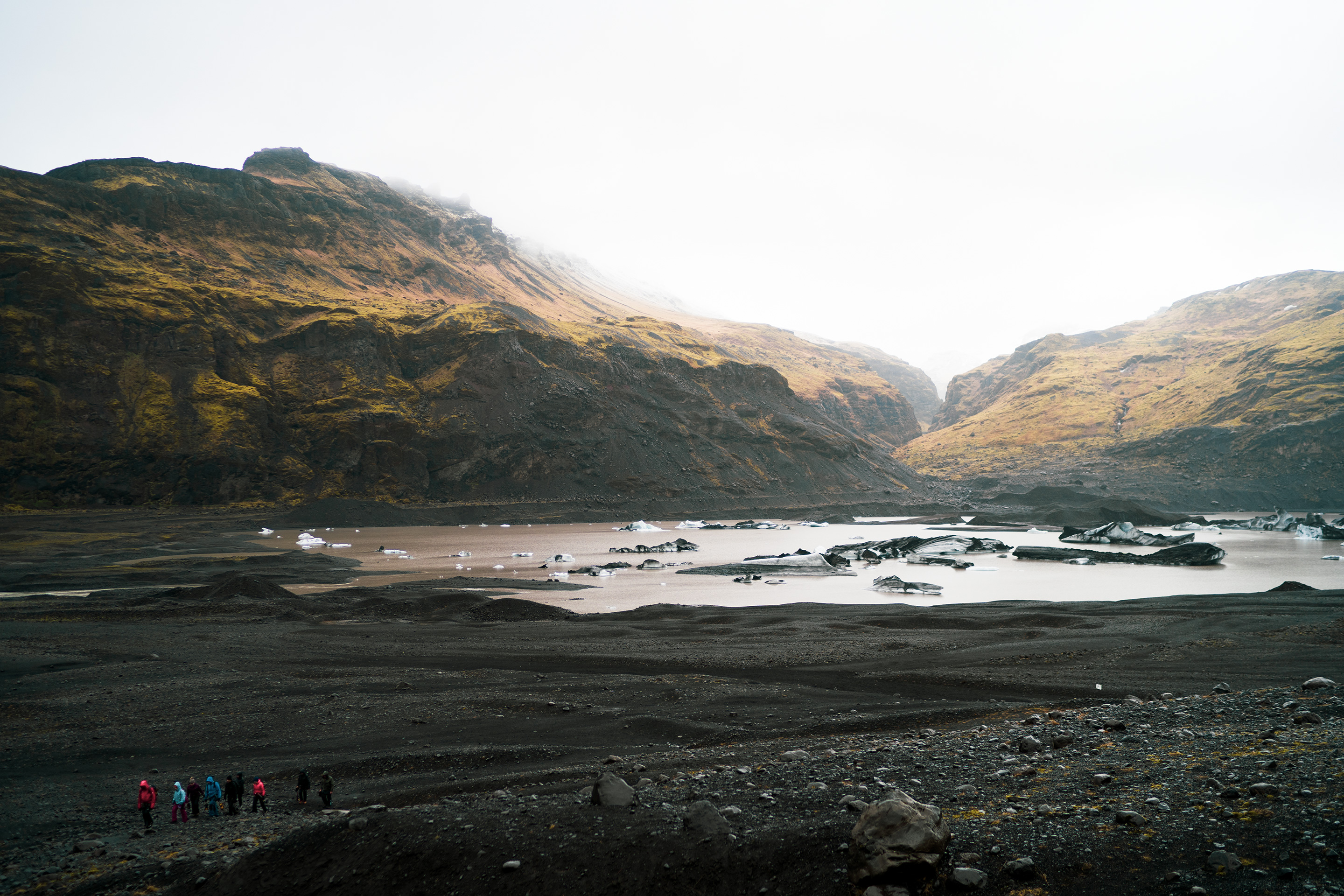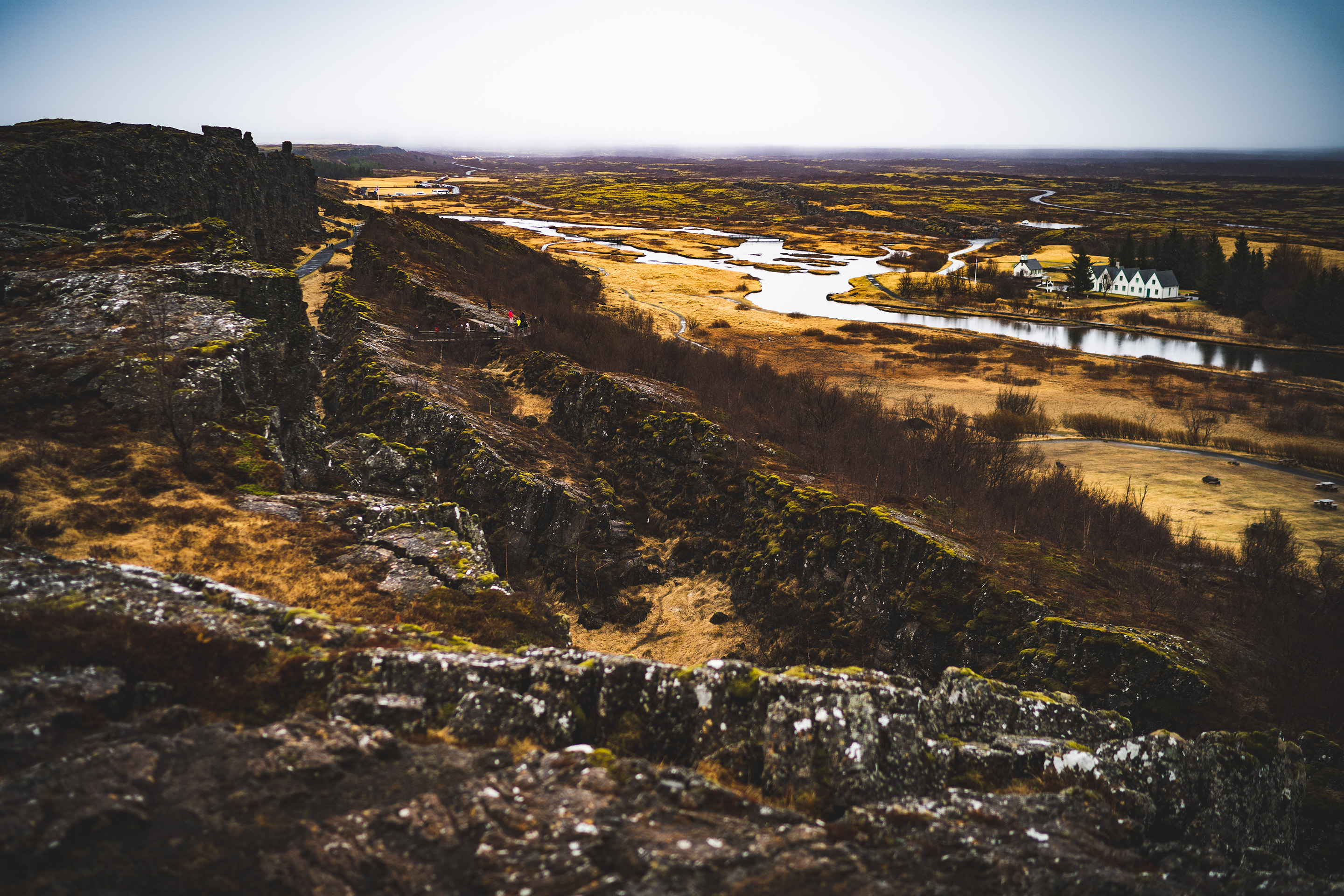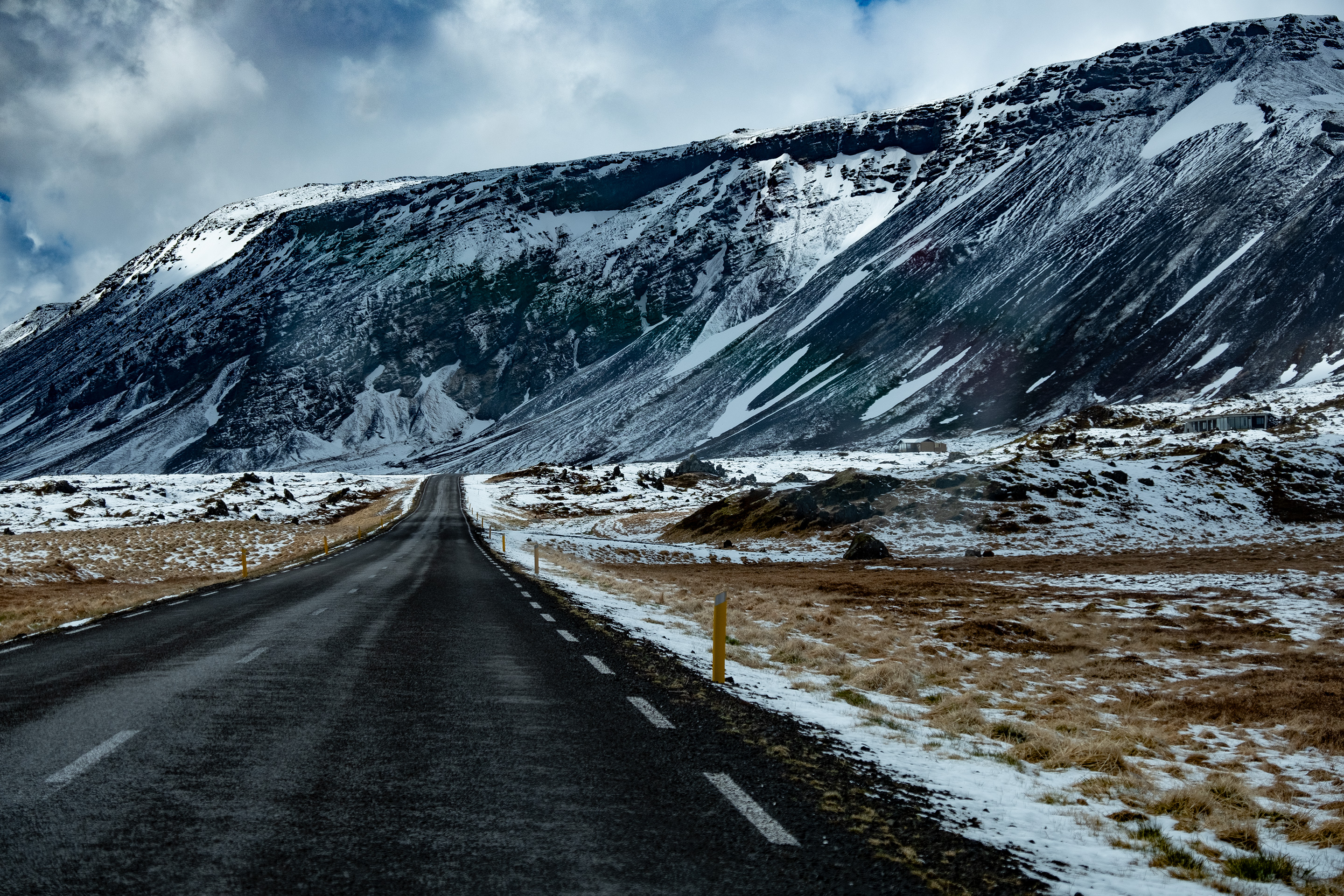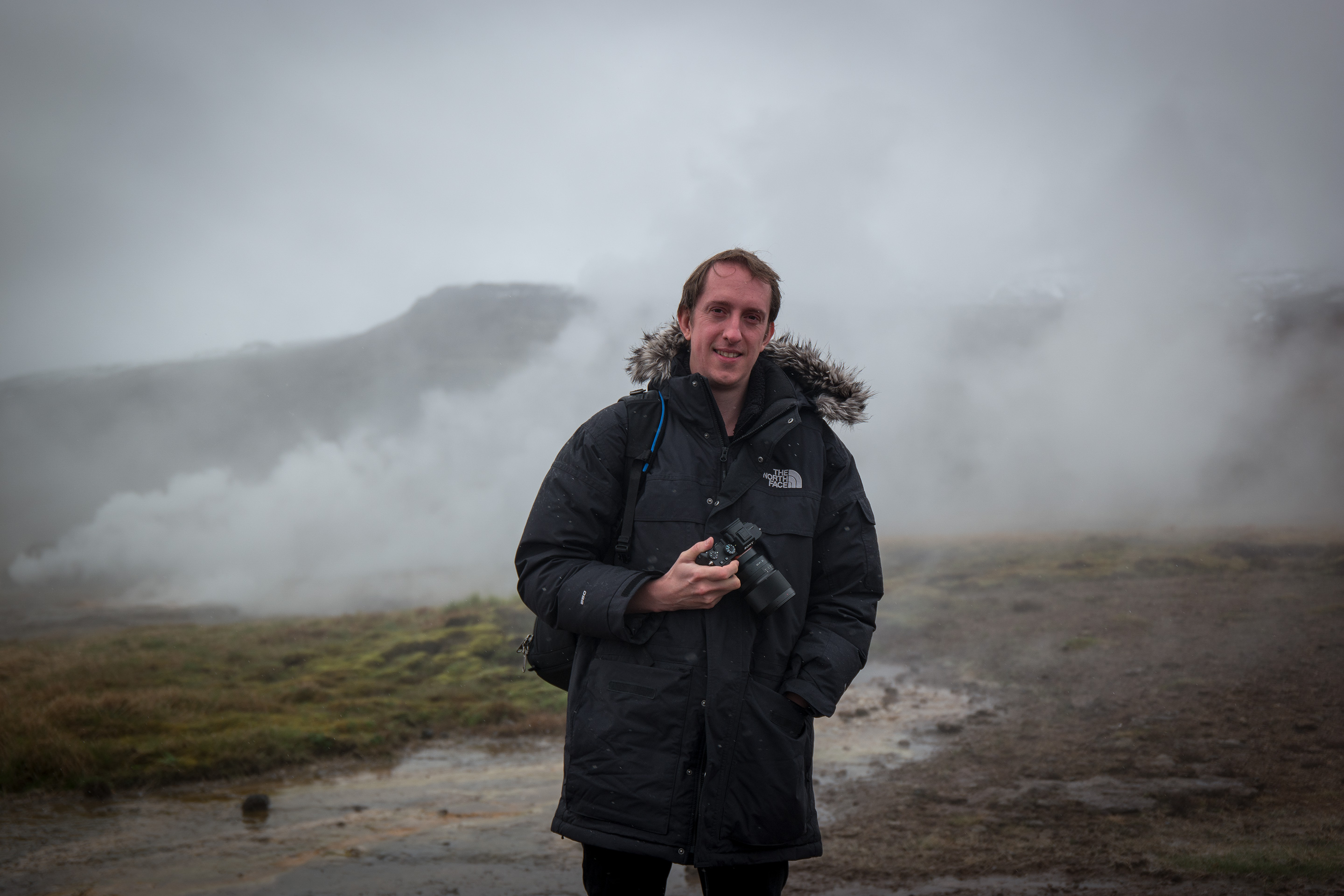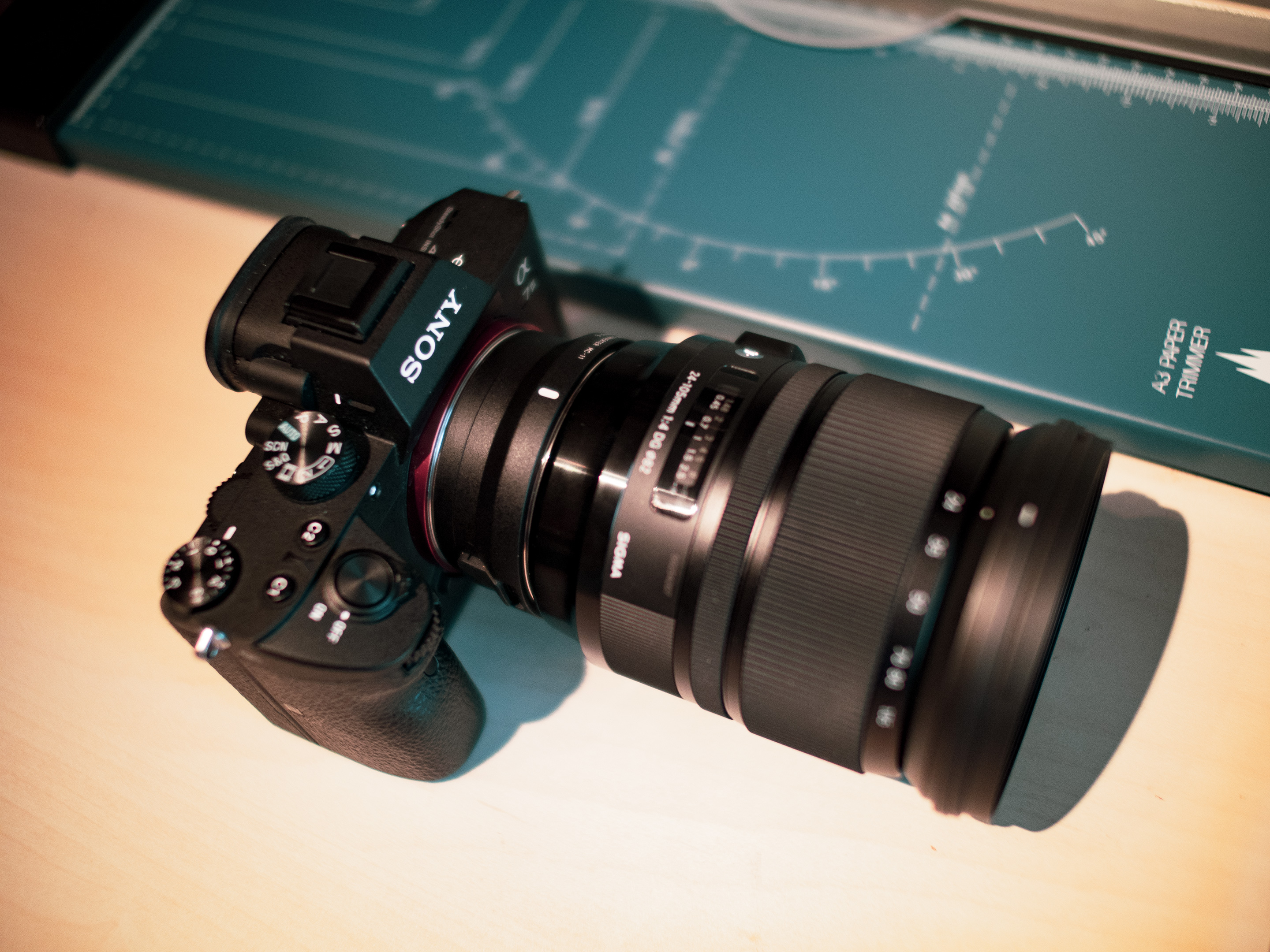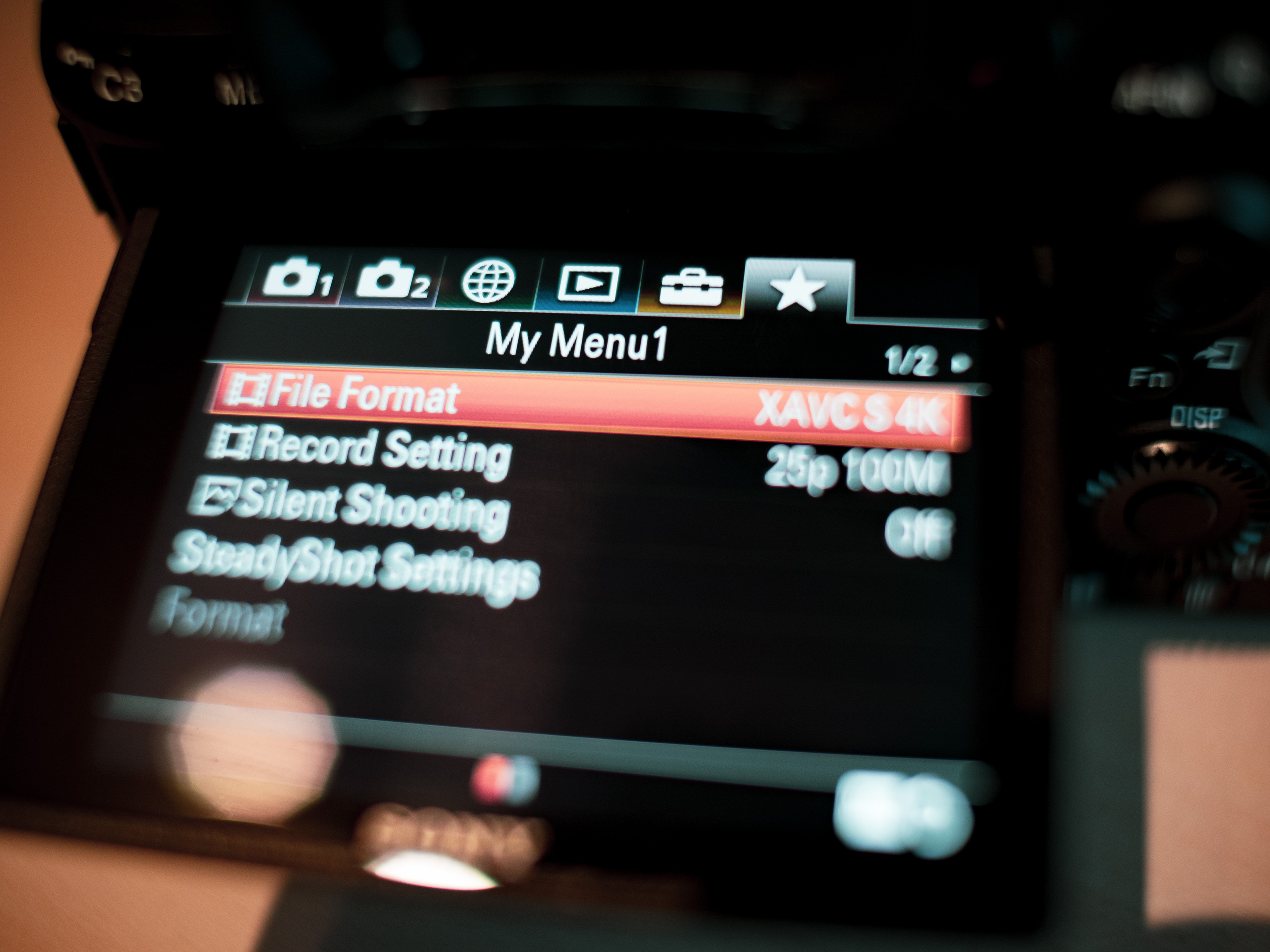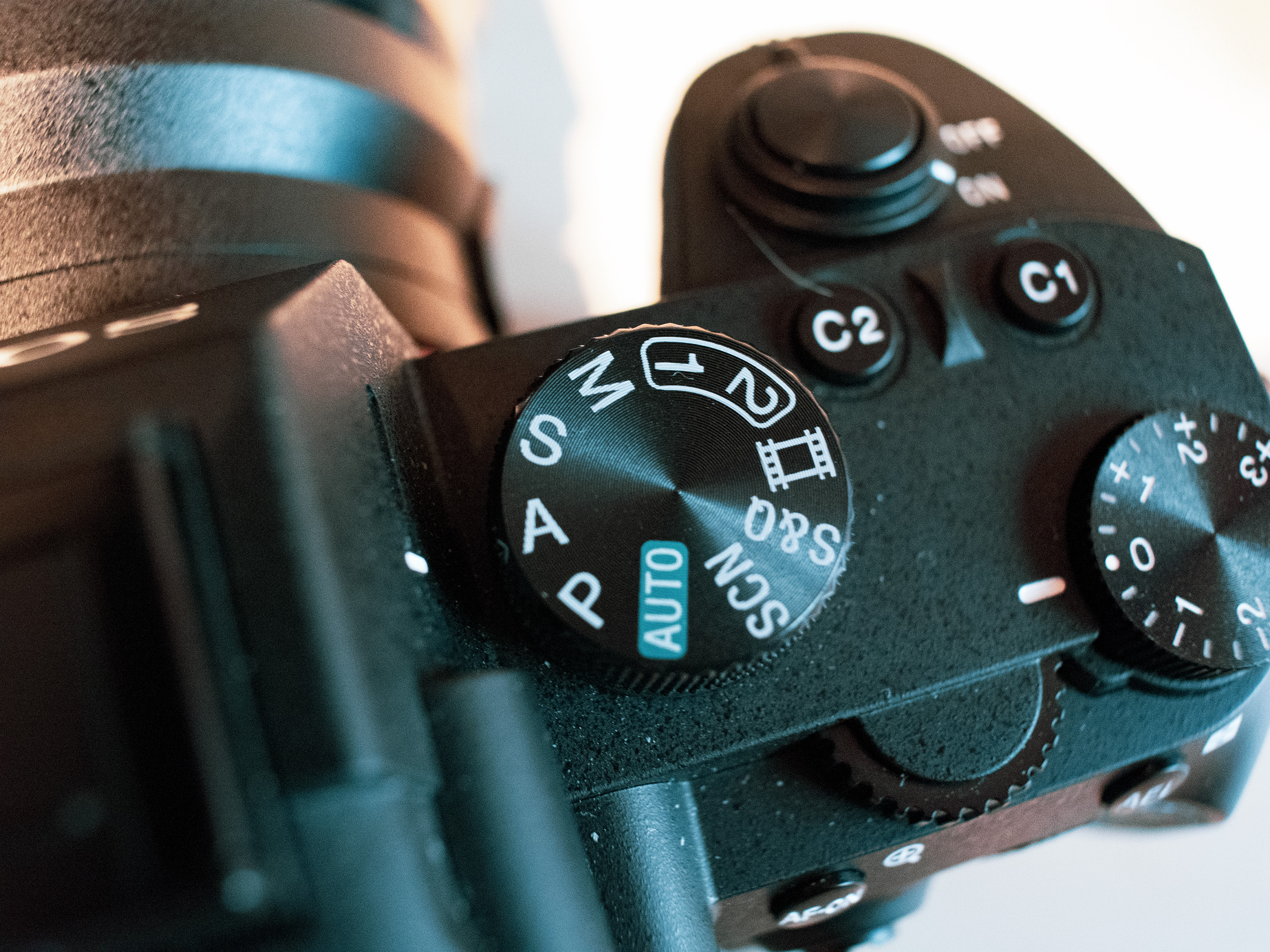
A fantastic piece of kit, but this camera is not without issues.
The changes vs the previous best for video, A7S II
I’ve been shooting in Iceland with the Sony A7 III which I bought in the UK earlier this month.
The full review is coming soon. First the positive first impressions, then onto the bad stuff.
- It is the first new camera under $2000 to shoot full pixel readout 4K full frame video with no crop, Hybrid LOG Gamma and great AF
- The low light performance is REALLY really good. Shoots at 12,800 with ease.
- Hybrid LOG Gamma and Rec.2020 give a nice easy alternative to grading S-LOG (tricky), as is the case on the other $3.5k A7R III
- Seemingly identical body and build quality to the A7R III
- Super 35mm toggling on a func. button is really nice – instant reframing opportunities with a prime and extra reach for your zooms
- Battery life is unbelievably good
- You can now charge the camera via USB even when a battery grip is attached, just takes a long time
- Joystick is a good addition to the body and the d-pad has been raised up for more tactile response
- Compared to the current video model (A7S II) the new 6K sensor readout in 4K mode, no crop, full frame 24MP, is a big step up over 12MP with better fine detail in 4K not to mention stills – and it’s just as good in low light
- No crop in the 120fps mode and the quality is nearly as good as the A7S II managed in 24p
- Card door design is much better and dual slots, although it’s a bit weird having slot 1 at the bottom not the top
- Autofocus a massive improvement over the A7S II
- Not tested rolling shutter in a proper way yet but it seems well under control
- Back LCD is much better and brighter than the old A7S II
Shooting with the A7 III
The changes Sony made between the A7R II and A7R III have been carried over to the A7 III and they are extremely welcome.
Something else positive is that the screen and EVF no longer dim during 4K recording, but your actual recording DOES! Both the A7R III and A7 III appear to use a different metering mode for video recording compared to photos and the live-view display.
The A7 III is a hybrid camera and I like to use it as one – that means shooting both stills and video in quick succession. The quickest way to do this is to set the camera to Aperture Priority mode (A) on the mode dial. That’s a stills mode. Really, what Sony need to do is have the option to assign a movie-mode on/off toggle to a function button like the Leica SL allows, because changing through 5 places on the mode dial is too slow and will mess up your timing shot to shot. Also diving into a menu to change the exposure mode separately for video is not very much fun. Furthermore, on the next model they need to add a top-panel E-INK display like on the Fuji X-H1 which shows whether the camera is set to movie mode or stills mode and other info like card space remaining. The camera should remain in whatever mode you toggled last – even when rebooted – and it should be just one button press.
Instead we have a situation where I never use video mode, preferring to stay in stills mode because I can’t shoot stills in movie mode at all. I have aspect ratio toggling 3:2 / 16:9 on a function button but that isn’t ideal because it brings up a silly sub-menu where you have to go up or down to select one of only two aspect ratios. I have movie recording assigned to the C2 button next to the shutter release. In stills mode you get a better manual focus zoom as well, much more detailed.
I like this setup but it has a problem, because unless I shoot in full manual mode, my videos are almost always exposed a full stop darker than my stills.
It is not a picture profile issue or a gamma shift but an actual adjustment the camera makes to shutter speed or ISO.
It appears that when set to the default Multi-Metering mode, video clips are recorded 1 stop under on the same settings as stills and same exposure mode with same metering. The metering behaves more like the Full-Screen Average in video recordings. I don’t know why Sony chose this behaviour. To preserve your highlights? Well if I wanted to do that I would just use the exposure compensation dial. We cannot have a gamma shift or exposure shift of the live-view display between stills shooting and movie recording. Sony should give us the same Multi-Metering behaviour for video recording, stills shooting and live-view. That is firmware update memo number 1.
One work-around is that you can select Full-Screen Average metering mode, then both stills, live-view and video are exposed similarly badly! In the most part too dark – i.e. exposed for a window or the sky, rather than your main subject.
Quickest fix? Just give us the same metering for stills and video when in movie mode and make the shutter button take a photo. It is unintuitive user interface design that you cannot take stills in the movie mode. That’s firmware update memo no. 2 for Sony.
Autofocus
So the hybrid side of the camera needs some work but the the other thing which needs a firmware update is the AF behaviour with Sigma lenses and this goes for the A7R III too. In AF-C mode Sigma’s lenses are quite wonderful through their own MC-11 adapter for EF mount. Performance is on par (or close-to) Sony’s native FE mount lenses on this camera, same as the higher-end A7R III. The performance is enabled by phase-detect AF on the sensor. Switch to AF-S mode and phase-detect is disabled without any notification, with autofocus performance now bordering on useless. This is going to confuse a lot of users, so that is memo 3 for Sony with regards a firmware update.
They should make phase-detect the default all the time whether in AF-C and AF-S.
Oddly enough Sony’s own RX1R II fixed lens compact has a similar issue where AF-C boosts focusing performance like a miracle over AF-S mode. I find that on the A7 III with Sony’s own lenses they are pretty good in both AF-S and AF-C but the latter still has an edge. Why have AF-S use contrast detect at all? On DSLRs both AF-S and AF-C use phase-detect so the A7 III must try doing the same to avoid confusion and missed shots.
I now use AF-C exclusively on this camera, with the ability to lock focus on a back button. With video recording you can let the focus system in AF-C go where it wants to go and it does so smoothly without hunting. You can control the speed of the rack and the responsiveness to changes in the frame. You can set it to a centre point, tracking works, all sorts of options except from eye AF. However, many people are in the habit of half-pressing the shutter release to focus and if you do this in video mode it goes OUT of focus for ages and it is only when you let go of the shutter release or wait a long time that the system regains control. Firmware update memo 4!
I don’t think there’s any need for committee to pass these changes, as for all users they are more like bugs than purposeful design choices.
How about colour and skin tones?
So in the upcoming review of the A7 III, Fuji X-H1 and Nikon D850 which I’ve been shooting with in Barcelona and Iceland, I’ve had very pleasing results out of the A7 III but it still needs EOSHD Pro Color. And that is not just because I’m biased!
Although it has a 14bit sensor output, the picture profiles, skin tones and general out of camera results are still not a match to Fujifilm or Nikon.
I plan for EOSHD Pro Color to offer two modes for this model and the A7R III. One is an update to the established EOSHD Pro Color profile specifically for the two new models. The other is completely new profile and based on a Rec.2020 colour space. The former (normal Pro Color but updated for the new camera sensor) offers rich out of camera colour for all shooting circumstances, with no need to grade the image. It fixes the zombie skin tones, colour channel clipping, orangey reds and turquoise blue skies and more. Deeper colours. The A7 III out of the box still suffers from this clipping especially with bright, luminous blues. The Pro Color profile will be generally more film-like and thick feeling. The Sony creative styles are even more lifeless and weird, although a bit less weird looking than they were with the A7S II.
The second EOSHD Pro Color mode also gives straight out of camera results with no grading required, but gives you another 2 stops dynamic range in the highlights straight off the card. This is great for very high contrast scenes and saving that blown out window. Both profiles have a gentle highlight roll off and the first profile will be better for low contrast scenes or dull lighting that needs energising, including low-light shooting, with the second profile being more suited to landscapes and challenging bright light.
I am very happy with skin tones on this camera with the new Pro Color profiles. Not so much without, but it is great that we can fix this. I’ll release the new Pro Color for A7 III and A7R III users next week. The A7S III will get the FS5 II colour science so there will have to be another new profile for that when it comes out. I hope that Sony can stop swapping and changing their colour science after that.
Sony were supposed to downgrade the EVF on the A7 III compared to the A7R III but honestly I don’t see much of a difference. They are both quite cramped compared to the best from Fuji (X-H1) and Panasonic (G9, GH5). The Leica SL still leads the way after a few years. Both the A7R III and A7 III EVF take quite a pixilated live-view display so the resolution of the panel doesn’t seem to be fully exploited by the image processor – and it gets more pixilated again during half press to focus.
First impressions conclusion
Apart from this and the poor colour profiles out of the box, the camera has no other major issues technically. Where it falls down vs the Fuji X-H1 is the design of the body. It’s very clinical and a bit too small and fiddly. I prefer the feel of the X-H1 in the hand and Samsung NX1. I enjoy looking through the viewfinder on the X-H1 all day whereas the A7 III gets quite fatiguing. I also feel the X-H1 has a more locked down 5 axis IBIS system with less micro jitter and tilting rotation for handheld shooting – it is almost as if you’re using a tripod.
Where I do feel the A7 III is most exciting is that full frame sensor. Canon isn’t in the game compared to this. The quality of the full frame 4K is very good indeed with no moire or aliasing to speak of and very good fine detail and dynamic range. The 1080/120fps is also excellent, at least as good as I found it was on the A7R III. It is streets ahead of the Canon 6D Mark II for both stills (dynamic range) and features. In video performance it is ahead by several very long streets.
For $2000 I think it’s a steal.
Where you might start to find more thick looking files and better colour out of the box is from the Nikon D850 but that is quite a bit more expensive and more dated in terms of usability, being a DSLR. It also has a bit more aliasing in full frame mode but to be honest it is so good that you can barely ever notice it, even when pixel peeping.
As for the X-H1 it is a real dark horse. Stay tuned to the next article for that one!!




